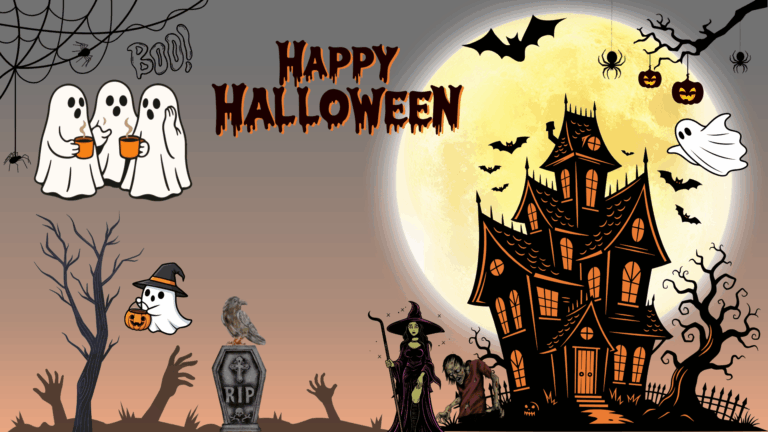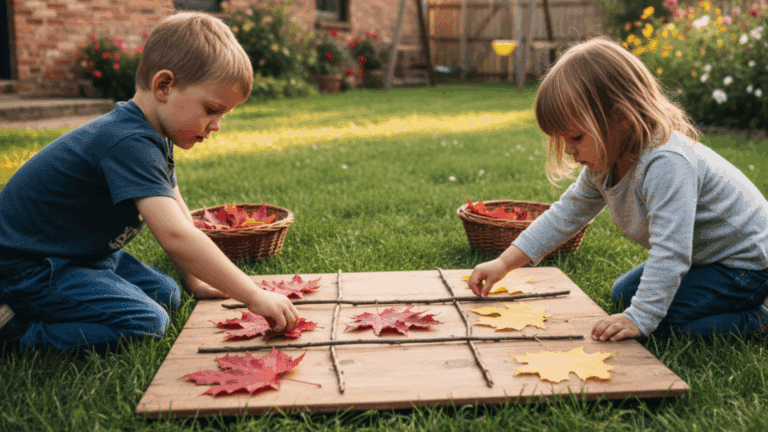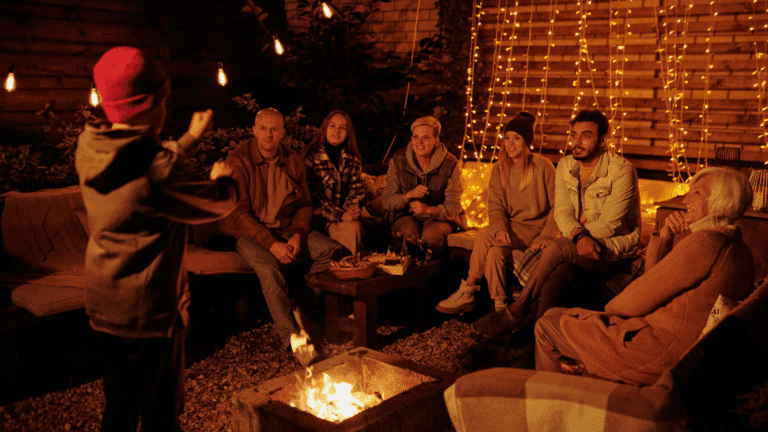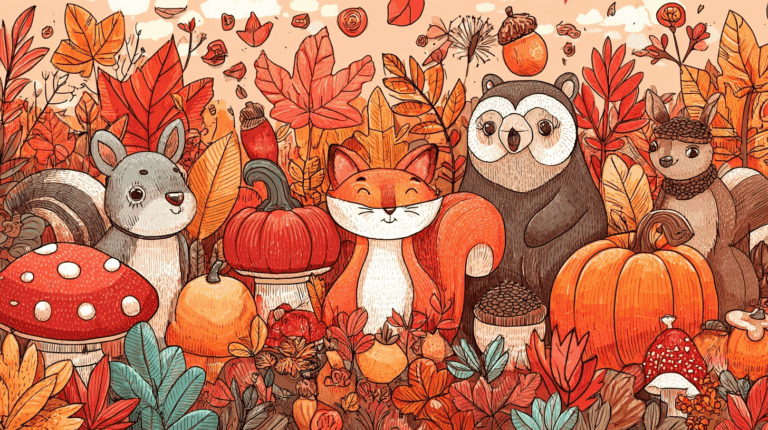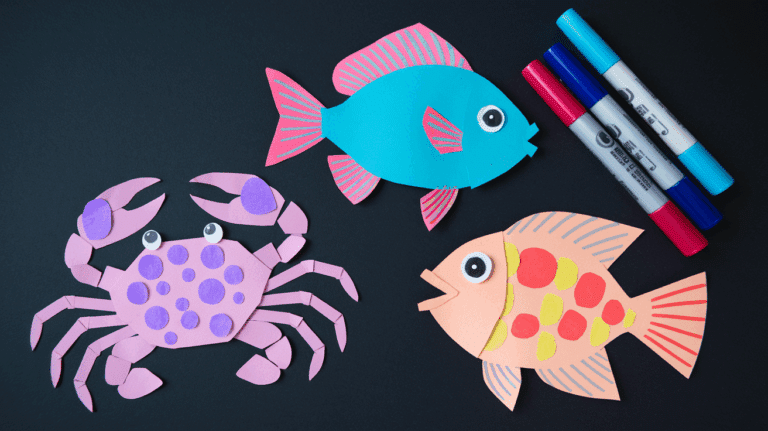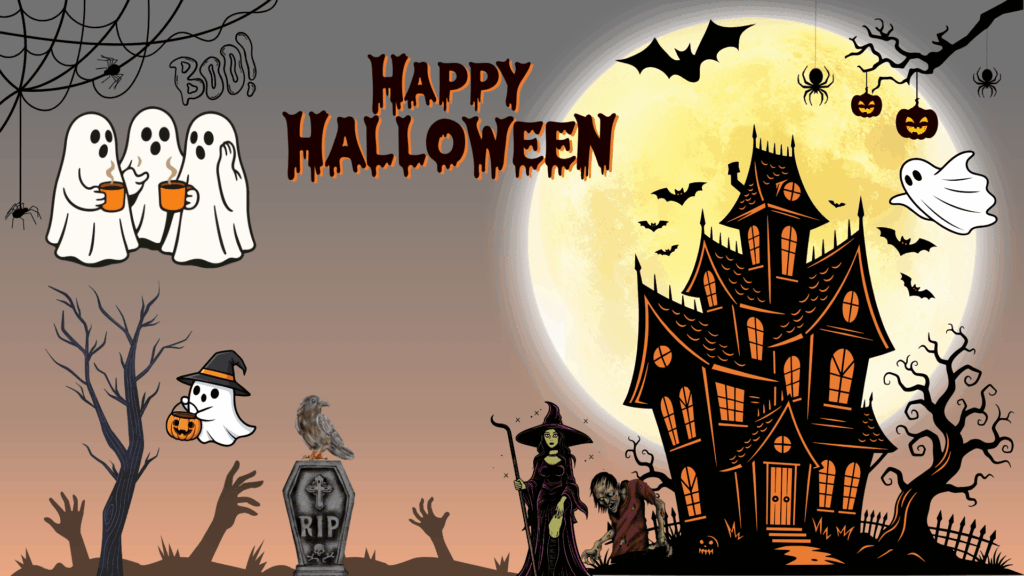Have you ever looked closely at a snowflake resting on your glove and thought, “Wow, how can something so small be so beautiful?”
Snowflakes aren’t just tiny bits of frozen water; they’re nature’s artwork, each with a unique shape and story. They float down from the sky like icy stars, full of wonder and science.
In this blog, we’ll look at the magical world of snowflakes, how they form, why no two are exactly alike, and some fun facts that will amaze both kids and adults.
Curiosity, a love for winter, or an interest in nature’s cool surprises can all lead you here. Get ready to uncover why snowflakes are some of the most dazzling creations in the natural world.
What is a Snowflake?
A snowflake is a small, delicate piece of frozen water that forms high in the sky during cold weather.
It begins as a single ice crystal formed when water vapor in the air freezes around a tiny particle, such as dust. As the crystal falls through the clouds, it absorbs more moisture and develops into a unique shape.
Many snowflakes are made of several crystals that have stuck together on their way to the ground.
Characteristics of Snowflakes:
Snowflakes may be tiny, but they possess some interesting features that make each one unique and special.
- All snowflakes have six sides due to the way water molecules freeze into hexagonal patterns.
- Each snowflake is unique, shaped by its journey through changing temperatures and humidity.
- They are fragile and melt quickly when touched or exposed to warmth.
- Snowflakes appear white but are actually colorless; light bouncing off the ice makes them look snowy.
Snowflake Formation & Shapes
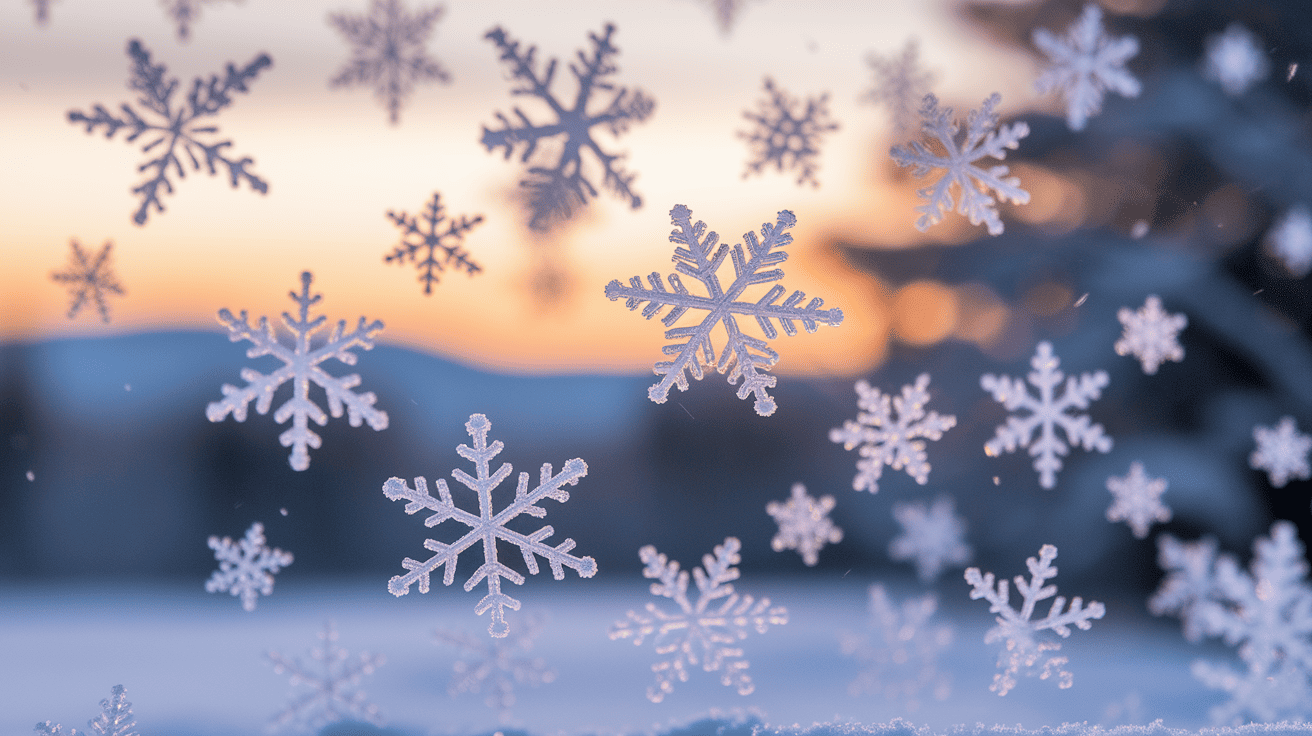
Snowflakes form high in the sky when water vapor freezes around tiny dust or pollen particles. As they fall through cold, moist air, more vapor freezes onto them, helping them grow.
The temperature and humidity affect their final shape, making each snowflake one-of-a-kind. They all have six sides because of how water molecules bond when they freeze, creating symmetrical patterns.
| Shape | Description |
|---|---|
| Plate | Flat, thin, six-sided like a dinner plate |
| Column | Long and rod-shaped like a pencil |
| Star | Classic six-pointed snowflake |
| Dendrite | Lacy with branching, fern-like arms |
| Needle | Thin and straight like a sewing needle |
| Capped Column | Rod with flat plates at both ends |
| Irregular | Broken or bumpy with no clear shape |
Cool Facts About Snowflakes
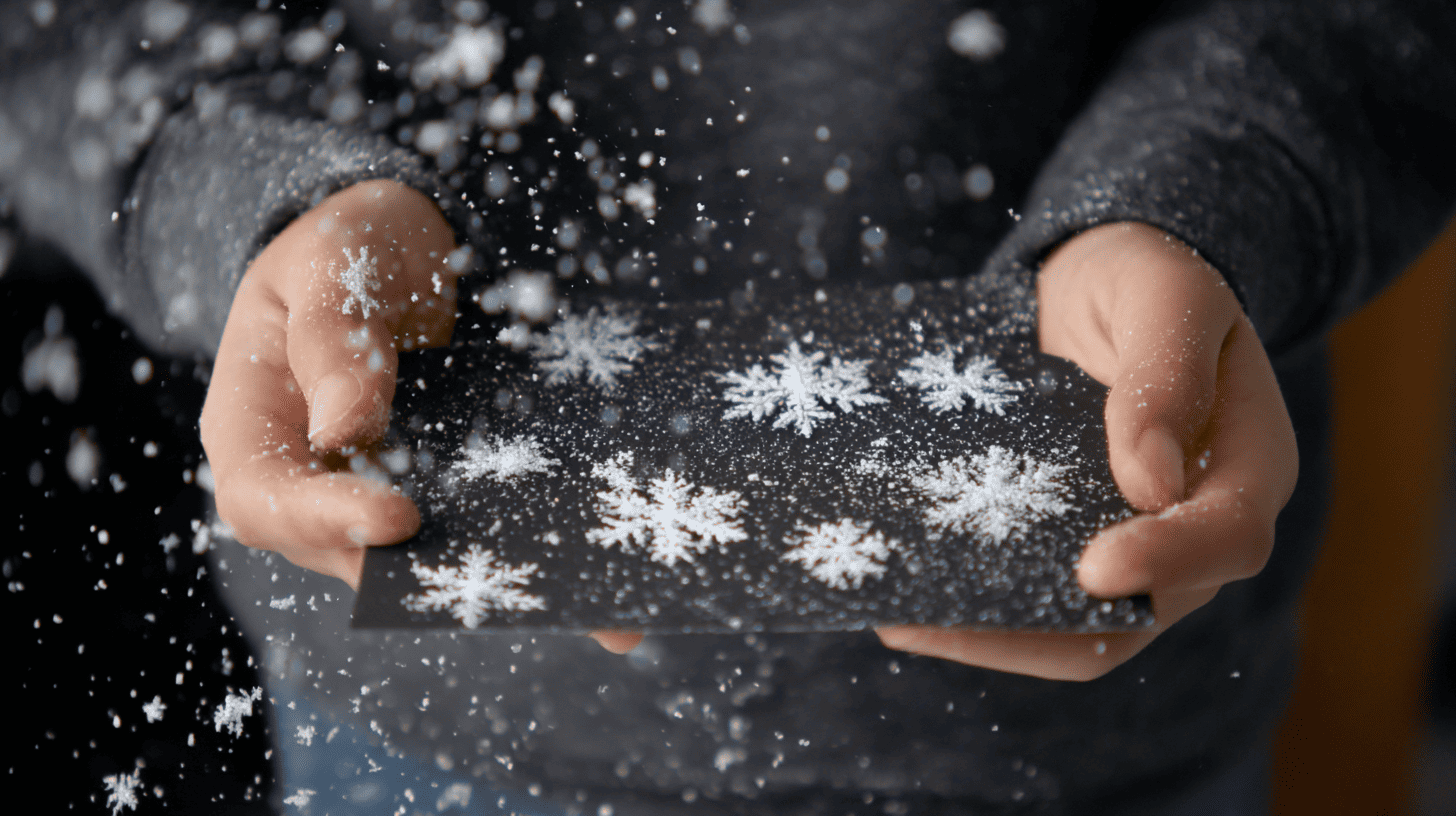
Get ready to find out fun and frosty facts that make snowflakes even more magical!
- A single snowflake can contain up to 200 individual ice crystals.
- Snowflakes fall at a gentle speed of about 3 to 4 miles per hour.
- Every year, at least 1 septillion snowflakes fall from the sky, that’s a 1 with 24 zeros!
- Snowflakes look white, but they are actually colorless; light reflection makes them appear white.
- Snowflakes only form when temperatures are at or below 32°F (0°C).
- The largest snowflake ever recorded was reportedly 15 inches wide and fell in Montana in 1887.
- No two snowflakes are exactly alike; each one forms under unique conditions.
- The shape of a snowflake can reveal the temperature and humidity where it formed.
- Snowflakes are made of ice crystals that form around tiny particles, like dust or pollen.
- Most snowflakes have six sides due to the molecular structure of ice.
- The process of snowflake formation is called crystallization.
- Snowflakes can be classified into about 35 different shapes.
- Wilson Bentley, known as “Snowflake Bentley,” was the first person to photograph a single snowflake in 1885.
- Snowflakes can be as small as a grain of sand or as large as a coin.
- The average snowflake falls for about one hour before reaching the ground.
- Snowflakes can travel hundreds of miles from where they first formed.
- Snowflakes are symmetrical but not perfectly so.
- The term “snowflake” refers to a single ice crystal or an aggregate of crystals.
- Snowflakes can stick together and form snow pellets called graupel.
- Atmospheric conditions influence the intricate patterns of snowflakes.
- Snowflakes can melt and refreeze as they fall, changing their shape.
- The Japanese word for snowflake is “yukihira.”
- Snowflakes can form in clouds as high as 10,000 feet above the ground.
- The study of snowflakes is called snow crystallography.
- Snowflakes can have hollow columns, needles, or plates as shapes.
- Some snowflakes are so fragile that they break apart before reaching the ground.
- Snowflakes can be used to study pollution, as they trap particles from the atmosphere.
- The largest recorded snowstorm dropped over 75 inches of snow in 24 hours.
- Snowflakes are often used as symbols of winter and uniqueness.
- The temperature must be just right for snowflakes to form; too warm, and you get rain.
- Snowflakes can form at temperatures as low as -40°F (-40°C).
- The phrase “no two snowflakes are alike” is scientifically accurate at the molecular level.
- Snowflakes can be seen under a microscope, revealing their detailed patterns.
- Snowflakes are a popular subject in art, jewelry, and holiday decorations.
- Some snowflakes are almost perfectly flat, while others are more three-dimensional.
- Snowflakes can reflect and refract light, creating a sparkling effect.
- The moisture content in the air affects the size and shape of snowflakes.
- Snowflakes can be preserved by catching them on cold glass slides.
- Snowflakes can fall in places you wouldn’t expect, like deserts, during rare cold snaps.
- The Inuit have many words for different types of snow and snowflakes.
- Snowflakes can contribute to avalanches when they accumulate in unstable layers.
- The first scientific study of snowflakes was published in 1611 by Johannes Kepler.
- Snowflakes are not always soft; some can be hard and crunchy.
- The sound of snow underfoot is caused by the crushing of snowflakes.
- Snowflakes can help insulate the ground, protecting plants and animals from extreme cold.
- Snowflakes can form in both fresh and saltwater clouds, but salt affects their structure.
- Snowflakes can be artificially created in laboratories for research.
- The density of snowflakes affects how much snow accumulates on the ground.
- Snowflakes are often used as motifs in science to explain symmetry and geometry.
- Some snowflakes are so tiny they can only be seen with a magnifying glass.
- Snowflakes can clump together to form snowballs and snowmen.
- The study of snowflakes helps meteorologists predict snowfall and weather patterns.
- Snowflakes sometimes join together to form snowflakes with more than six arms, but these are rare.
- The world’s first snowflake stamp was issued by Austria in 2000, featuring a real snow crystal.
- Next time it snows, remember: you’re catching a tiny, one-of-a-kind masterpiece created by nature!
Wrapping it Up
Snowflakes are nature’s delicate works of art, each one crafted with incredible detail and wonder. Their six-sided shapes, icy sparkle, and unique formation process remind us just how magical science can be.
Every flake that falls from the sky carries a story written in crystal, a reminder that no two are ever the same. Learning about snowflakes helps us appreciate the beauty and complexity of winter, from chilly clouds to the soft snowfall on our mittens.
So, next time snow begins to fall, take a moment to watch closely.
Catch a snowflake, admire its tiny shape, and imagine the amazing path it took through the sky. Stay curious, and never stop exploring the wonders of the world around you!







